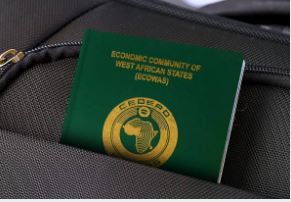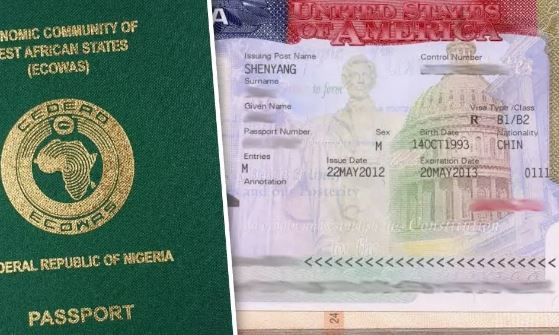If, as a Nigerian student, you need some clarifications about how to write a perfect cold email to professors in the USA, Canada, or anywhere else in the world, your doubts will be nothing to worry about after a few minutes of reading this article. It is usually challenging to write cold emails. It becomes more complex when the recipient is an expert who can identify errors at the drop of a hat. Hence, your email’s subject, salutation, body, and closing must be top-notch and error-free while being succinct.
We also published an article about writing an Excellent academic CV for master’s applications abroad, which you can refer to following this post as it may be of great help.
Meanwhile, this article will guide you through writing an impressive cold email to a professor for any request.
Let’s get down to business.

Table of Contents
What does Cold Email Mean?
A cold email is an unsought email helpful to introduce an individual to someone or a company when there is no existing relationship between the sender and receiver. Even though cold emailing differs from email spamming, the sender could receive it as spam if composed inappropriately.
Cold emails help to create a one-to-one conversation between two individuals, especially for promotional purposes.
How to Write a Cold Email to Professors in the USA or Canada
Here is a stepwise guide to writing a flawless cold email to professors in virtually any country, including the United States and Canada.
Type your email’s subject
The first thing to include when writing a cold email is an informative subject line to make a good impact. Your email’s subject must not include emojis, slogans, spammy words, or anything else that could make the professor refuse your request.
The best salutation to use
You must also consider using an appropriate salutation for your cold email to a professor, starting with the word “Dear” followed by the professor’s title and last name. Be mindful that addressing the professor as Mr., Ms., or Mrs., or with Hi or Hey, sounds disrespectful.
After typing the salutation, you can proceed with your email’s body.
Write a concise email’s body
The body should begin telling your name and department to the professor. Of course, it must feature precise details in three to four paragraphs of concise sentences.
Closing your email rightly
Lastly, end your email’s body with an appreciative note, such as Thank you, Thanks in Advance, Thanks in Anticipation, etc.
Recommended: Easy Steps to Get Secondary School Transcript in Nigeria
Sample of a Cold Email to Send to a Professor in the US or Canada
See below for an illustration of what a perfect cold email should look like.
“Email’s subject: Wish to join your research group
Dear Professor (Last Name),
I hope my email finds you well.
My name is James Daniel, and I’m a first-year graduate student in the Bachelor of Psychology degree program.
I was searching for information online for my assignment when I came across your profile on Research Novelty. Of so many interesting journals that I discovered, I found a particular one intriguing about the causes of common mental illness and how to avoid them.
As an aspiring medical professional with an academic specialization in psychiatry and neurology, I would appreciate a chance to talk with you about joining your research group this year.
I have my resume attached to this email and will be available for in-person, telephone, and Zoom meetings. Please inform me if we can schedule a time.
Thanks in anticipation of your response.
Best Regards,
Daniel James”.
Tips for Writing a Perfect Cold Email to Professors in USA/Canada
Consider the following tips helpful when writing a cold email to an American or Canadian professor.
- Avoid addressing the professor informally, such as using Hi, Hey, Mr., Mrs., Ms., etc. Instead, you should use Dear Professor’s Last Name.
- Be sure that you spell the professor’s name correctly.
- Email the professor early, as they might respond later than you expect.
- Only email one professor within the same department for the same request.
- Ensure your email is highly personalized to the professor, giving reasonable justifications that cite their work(s), its relation to your discipline, and how you can make an impact.
- Sell yourself to the professor without including a full autobiography in your email.
- Keep your email’s content succinct in three or four paragraphs.
- Your email’s subject line must be informative, providing essential information about what the email entails.
Since your email’s recipient is a scholar, proofread its content to check for possible errors before sending.
Frequently Asked Questions
Can you send cold emails in the USA?
Yes, sending cold emails to professors in the United States is legal since you mean no harm to the recipient.
What is the best time to send a cold email to a professor in the USA?
The most appropriate time to send cold emails to professors is between 8 am and 11 am. It is also best to send it between Tuesday and Thursday. However, you may need to find out the time zone of the current country the professor is in.
What is the success rate of cold emails?
Cold emails to professors in the United States and Canada have an average response rate of 15 to 25%.
Can you use Gmail for cold email?
Yes, you can use your Gmail account to cold email professors in the US and Canada. It is as simple as emailing anyone via Gmail mobile app or website.
How do I address a professor in a cold email?
The ideal way to address a professor when sending a cold email is to use Dear Professor Last Name. Anything different from the above format is inappropriate and is like an insult to the professor.
Conclusion
Sending well-crafted cold emails to professors in the USA and Canada has a unique way of guaranteeing that the professor opens the email and grants your request. It is equally important to follow up if you are still waiting to receive feedback from the professor after one or two weeks. If it remains the same, you could plan a visit anytime between 10 am to 3 pm on Tuesday to Thursday. Thanks for reading, and remember to share this article with your friends on various social media platforms.









